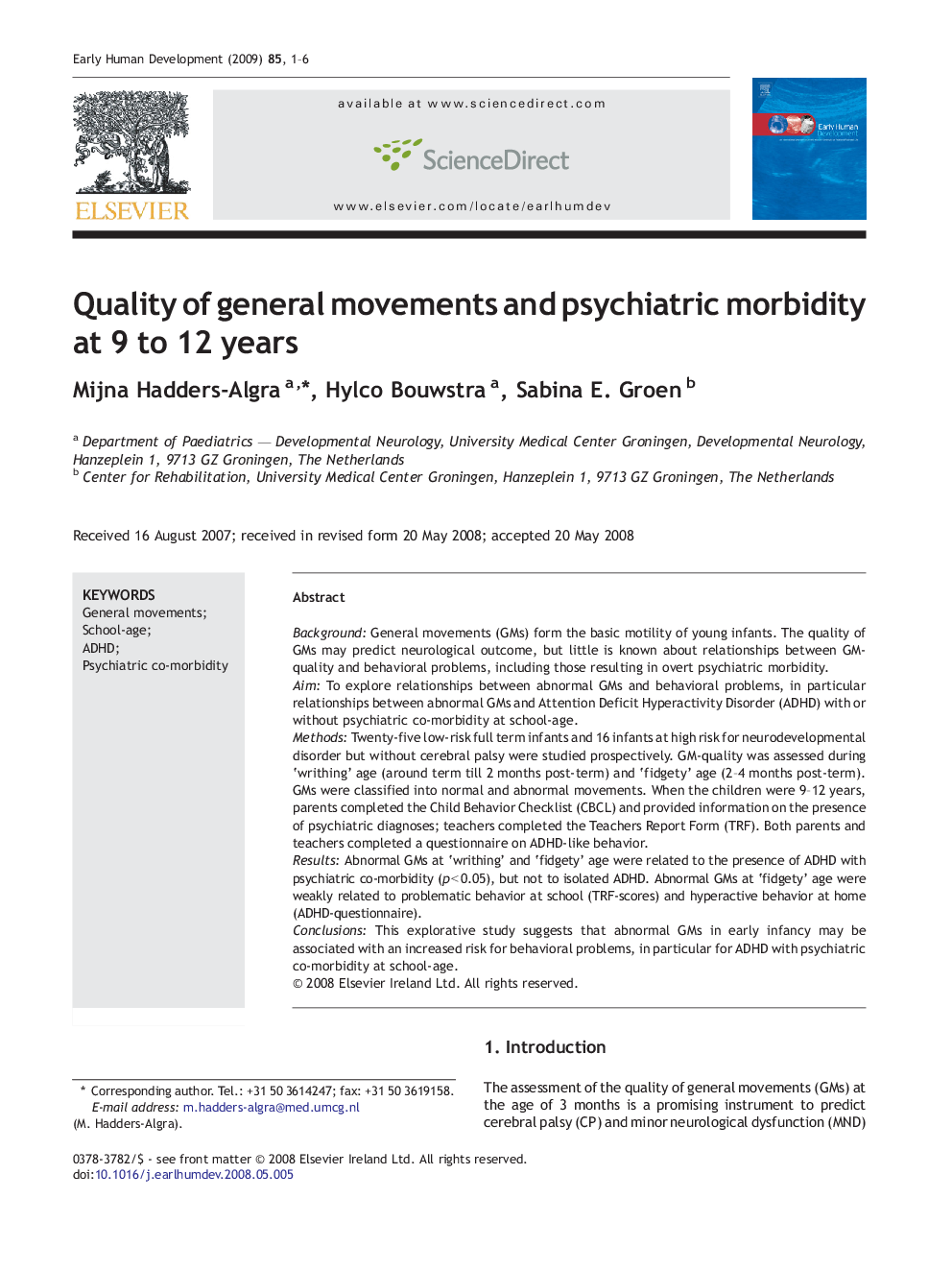| Article ID | Journal | Published Year | Pages | File Type |
|---|---|---|---|---|
| 3917966 | Early Human Development | 2009 | 6 Pages |
BackgroundGeneral movements (GMs) form the basic motility of young infants. The quality of GMs may predict neurological outcome, but little is known about relationships between GM-quality and behavioral problems, including those resulting in overt psychiatric morbidity.AimTo explore relationships between abnormal GMs and behavioral problems, in particular relationships between abnormal GMs and Attention Deficit Hyperactivity Disorder (ADHD) with or without psychiatric co-morbidity at school-age.MethodsTwenty-five low-risk full term infants and 16 infants at high risk for neurodevelopmental disorder but without cerebral palsy were studied prospectively. GM-quality was assessed during ‘writhing’ age (around term till 2 months post-term) and ‘fidgety’ age (2–4 months post-term). GMs were classified into normal and abnormal movements. When the children were 9–12 years, parents completed the Child Behavior Checklist (CBCL) and provided information on the presence of psychiatric diagnoses; teachers completed the Teachers Report Form (TRF). Both parents and teachers completed a questionnaire on ADHD-like behavior.ResultsAbnormal GMs at ‘writhing’ and ‘fidgety’ age were related to the presence of ADHD with psychiatric co-morbidity (p < 0.05), but not to isolated ADHD. Abnormal GMs at ‘fidgety’ age were weakly related to problematic behavior at school (TRF-scores) and hyperactive behavior at home (ADHD-questionnaire).ConclusionsThis explorative study suggests that abnormal GMs in early infancy may be associated with an increased risk for behavioral problems, in particular for ADHD with psychiatric co-morbidity at school-age.
